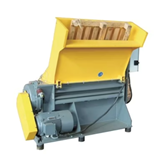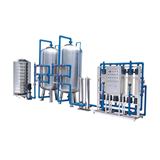Their achievement comes in response to growing global concern over the cancer and environmental risks from long-lasting chemicals in the foams used internationally to control petrol and other fires at tens of thousands of sites worldwide during the past half century.
The importance of the work by researchers at the CRC for Contamination Assessment and Remediation of the Environment (CRC CARE) was hailed recently in the presentation of one of Australia's top science prizes, a 2010 CRC STAR Award from the Department of Industry Innovation Science and Research.
CRC CARE managing director Professor Ravi Naidu says that the advance was based on the use of modified natural materials which break down the fire-fighting foam chemicals into harmless substances.
"Worldwide, people have been using these foams for fighting fires and fire drills for decades. Anywhere modern fire services operate, there is a risk of long-lasting contamination which may need to be cleaned up. It is to Australia's credit we have been able to come up with a promising answer to this global problem," he says.
The advance was made by a CRC CARE team led by Dr Venkata Kambala, working with local South Australian company Soil and Groundwater Consulting Pty Ltd, with support from the Australian Department of Defence.
The CRC team has developed a new substance called MatCARETM to treat the contaminated wastewater left after a fire site or practice area has been hosed down.
"Both PFOS (perfluorooctane sulfonate) and PFOA (perfluorooctanoic acid) increase the effectiveness of the foam as a fire quencher. However, both are highly toxic chemicals and, if they enter local water sources can accumulate up the food chain, including in humans," Dr Kambala explains.
"PFOS accumulates in the liver and blood," he adds. "In US animal studies PFOS has been linked to bladder cancer, liver cancer, and developmental and reproductive toxicity including neonatal mortality."
Although increasingly phased out of modern foams, PFOS and PFOA dominate residual contaminants at many sites.
"There are over 49 000 airports around the world, including 450 civilian and military airports in Australia alone," Dr Kambala says. "Many of these have used foam in fire-fighting exercises for many years, as well as in actual aircraft fires, and the chemicals have been subsequently detected in nearby groundwater and streams."
Large industrial fires, traffic, truck and railway accidents and even building fires may involve the use of fire-fighting foam, which can then escape into the surrounding environment and contaminate water supplies.
"These chemicals are very stable, and can move rapidly into local soils and waters where, because they are so long-lasting, they can reach quite unacceptable levels," says Dr Kambala.
Older clean-up techniques based on carbon filters are less effective and much more expensive. The CRC CARE technology is based on modifying the adsorbent properties of naturally-occurring clays.
"It is the first practical, cost-effective clean-up solution to the large-scale water and soil pollution caused by decades of foam use all over the world," says Professor Naidu.
The CRC CARE team has also developed a new field kit to test for the presence of the contaminants.






-160x160-state_article-rel-cat.png)


-160x160-state_article-rel-cat.png)














